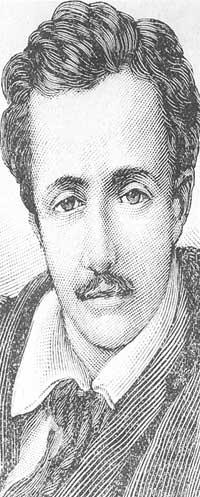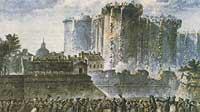Abbadia and Euskara
1993/08/01 Davant, J. L. Iturria: Elhuyar aldizkaria
Antoine ABBADIA LLEVANT, according to all its sources, had Basque and Basque from his father Michel. His two brothers also supported the Basque language. His father was Ürrüxtoitarra, suletino, of Pettha. Birthplace with “abbey”. In his writings he highlights, more than the tone of the Suletine dialect, his remarkable base. Idem in the writings of Antoine. It was also polyglot (spoke fourteen languages).
He had an Irish mother, but he got in favor of the Basque language. The women of the three brothers go that way, they will always appear hard-working companions of their husbands. Michel Abbadia, in exile, called a maid from Euskal Herria to Ireland to always speak Basque with the children. He returned from Ireland and put his hand in two Basque works. He collaborated with money and advice on Léclus grammar, also writing his claim (1826). He also did so with a grammatical work by Darrigol, who had a prize from the French Academy.

Antoine highlighted his fondness for the Basque language for sixteen years, helping Lécluse. Lécluse was a Parisian and taught Antoine in Toulouse in Greek.
In 1836, with Augustin Xaho, Antoine presented a Basque grammar: Etudes gramática sur la langue basque. It is a work written in French. It is based in Zuberoa. It also has the contagion of the labortano: no wonder in the tradition of the north, seeing the strength of the labortano in our literature. Abbadia and Xaho claim that they do not yet know the southern dialects. We owe them to Antoine. Firm A.T. d’Abbadie de Navarre. T: Thompson (of Parck), maternal surname; de Navarre: Xaho had just published the book Voyage en Navarre, which Abbadia alluded to in the Bulletin de geographie.
The prolegos have two parts: in the first, Antoine highlights the peculiarities of Basque. The second contains a bibliography of the best. The book is directed by “Zazpi Uskal Herrietako Uskalduner”, hence without lips the slogan “Zazpiak Bat”. We have Xahora's own grammar. It consists of three parts: I. Oral expression - II. Decline - III. Verb.

Then, Antoine has spent twelve years beating Ethiopia with his brother Arnauld. By translating it, it is located in Laburdi and is associated with Basque.
It builds the “Abbadia” palace in Hendaia, where Basque bridges appear, among other languages:
- Sapar edoceinec is its star
- Enough madness, the egoisteco undermining of a stone canton, you need six zuhur in your lounger
- Jaincoac, his colleague by profession
- To Jaincoarequi, jainco duek hirequi
We also see the suletino herex.
In the stelae of Ürrüxtoi there is one in Abbadia, under disorder. It has carved the following epitaph:
For Eneko there is no doubt that this funeral is about Antoine, who was his gozama, most of his father's sister, the month in which he is.
He will write other works on Basque, especially in French:
- 1854: Le Dictionnaire de Chaho
- 1854: Lattres sur l’orthographe basque
- 1859: Travaux récents sur la langue basque
- 1864: “A letter from Zubernoataco”
- 1868: Basque Country
- 1873: The Basque and the Berbère
- 1886: Lettre de M. A. d’Abbadie à M. le Président de la Société de Borda (sur léthymologie de LEHEREN, divinité pyrénéene)
- 1895-1896: Lattre sur la préservation de la langue basque (notice)
Signature several writings “Antonio ABADIA”.

The only one that appears in Basque in these works is “Zubernoatikaco gutuna”. It is in the so-called “National Library” of Paris, and its access would be valid. On the other hand, in these writings we see that Abbadia writes mainly in favor of the Basque language, but also knows how to introduce himself in the technique of the language and is able to analyze and explain the Basque works. Research recent works on Basque. In it, he praises Prince Louis-Lucien Bonaparte and praises above all the Basque Verb of the Suletino priest Intxauspe (Le Verbe Basque).
But more than written, it helps and helps the Basque language. In the works of Prince Bonaparte he has a special and brilliant place, for it is indispensable to find our collaborators Antoine, as the Prince himself tells him well in a letter.
He maintains close relations with writers and vascophiles of his time, including Captain DUVOISIN, the priest INTXAUSPE, SALABERRI, Bruno ETXENIKE, P. After URIARTE, ARXU are the Suletina regenta. Charles Abbadia, Antoine's younger brother, will also participate in this work of Ararteko and mediator: Two regions of Navarre will gather writers in their palace of Etxaroz de Baigorri.
Between Duvoisin and Xaho will include Antoine, either making a bridge or at Xaho's request: both writers were to join the writing of a separate Basque dictionary, and Xaho wanted to bring a collaboration in Duvoisin. Xuria was Duvoisin, the red was Agustín Xaho. But Abbadia, for his simplicity, also did so with Xaho, as we have seen before. That is why, in our case, as a defender of the people, it would not succeed.
Antoine Abbadia was a church that relied on bristles and priests to save Basque for the most part. Among those who had good collaborators (and the truth is that there always has most of the aid to recognize the Basque language). Discontent also surprised in this regard. At the Major Seminary and Seminary of Baiona, he offered the construction of a chair to teach Basque in his money, a right that was denied by its leaders. As in government schools, the Major Seminary of Baiona and the Special Seminary of Larresoro prohibited the use of Basque.

In order to promote Basque among young people, Abbadia takes a new path: in addition to First Communion, he will present the prizes to the children who are doing better in Basque, organizing commissions without priests. In this sense, the most brilliant work in favor of Basque is the organization of Basque festivals. It began in Urruña in 1853, six years before those famous Catalan “Cortes de amor”. In addition, of them and of all the floral games are distinguished the Basque festivals of Abbadia, with their generality: all the regions of popular culture are those that make up the festivities of Abbadia. However, subjects are poetry and Basque.
He will organize them for a long time in Urruña (1853-1863), then in Sara (1864-1876), then transfer them annually. They will pass to the South, in 1879 in Elizondo, and will be periodically extended on both sides.
The following year, recently deceased, Antoine Abbadia will be held in the Arenal with his widow.
Outside the Basque festivities of Abbadia, in the south there will be similar festivities between municipalities, provinces and cultural groups, both in their time and later: the last, in my opinion, in 1929, in Andoain.
It has been claimed that the level of poetry was not praised by those festivals. It is true that the precept cannot create inspiration, but it can give someone the opportunity to write. These contests created a hobby and I believe that Abbadia's work in Basque letters has its consequence.
They have praised at least the level of Basque. The prose of the writers of that time has the French text literally, as the translations of today are those of Spanish. On the contrary, the verses are written in real Basque and from there, in my opinion, at least in Iparralde, the quality of Basque that we have learned the minors. At least our former writers could not access the prosists of the mid-nineteenth century. Where did they learn to write from?
Abbadia's work in favour of the Basque language cannot be imagined. As Jon Bilbao says in his Encyclopaedia, “Abbadia moved each and every one of those who moved in the recovery of Basque and Basque literature.” More than a writer, Patron, the antola, the push, the bil, the council, was inspiring. He is the creator of the Basque cultural movement. In addition to the idea and example of his work, in 1892 he ended with the message of the Basque festivals of San Juan de Luz: atxik hizkuntza... A Zazpiak! The latter is the Basque cry, which is based on the Basque language, in the seven Basque peoples of today and throughout the world.
Abbadia's works and message, based on the Basque language, are axes and objectives for the benefit of the Basque people.
J. H. S.HebeVenais back in the ShiztecoMaría
Maitena ABBADIACO
ALHABA__________He was born in the
Aphiril1771He died on the
4th day 1856-anÂn
185Ân
JINCOnima
Igaraile Corazón in
Valdia?a
The list of Basque festivals organized by or with Abbadia is as follows:
- 1853-1863: Urruña
- 1864-1876: Sara; they were not given in 1871 by the war between the French and the Germans
- 1877: In Donapaul
- 1878: Sara
- 1879: Elizabeth
- 1880: Bera and Maule
- 1881: Irun
- 1882: Sara
- 1883: In Markina
- 1884, 1885: Sara
- 1886: Durango
- 1887: Azkaine
- 1888: Cambo
- 1889: Doneztebe-Santesteban (Navarra)
- 1890: Maulen
- 1891: Iurreta (Bizkaia)
- 1892: San Francisco
- 1893: In Ustaritz
- 1894: Hazparn and San Juan de Luz
- 1895: Bera and Ezpeleta
- 1896: Kanbon and Maulen.

Gai honi buruzko eduki gehiago
Elhuyarrek garatutako teknologia





